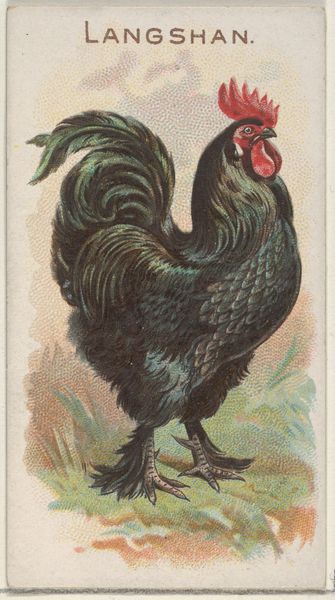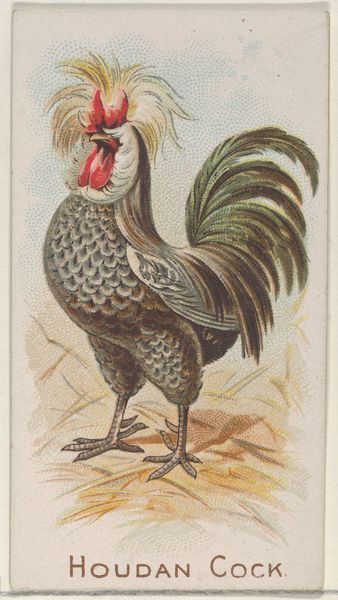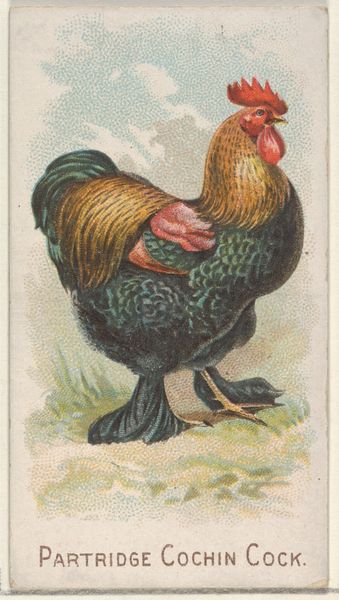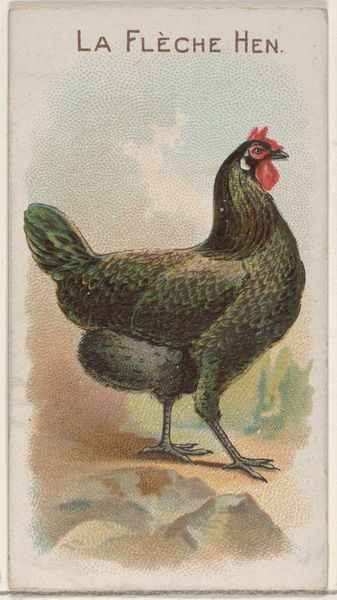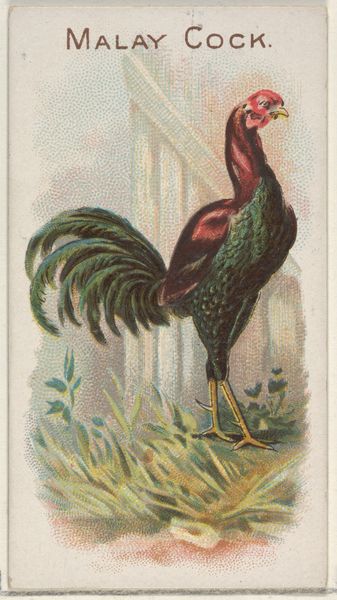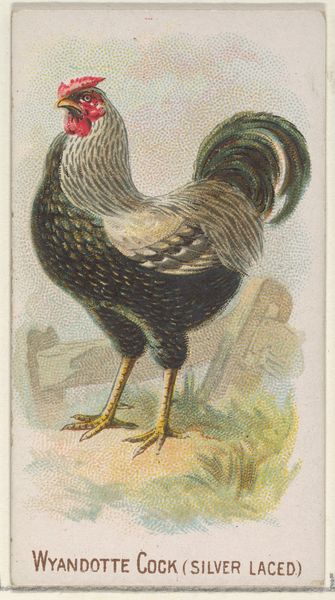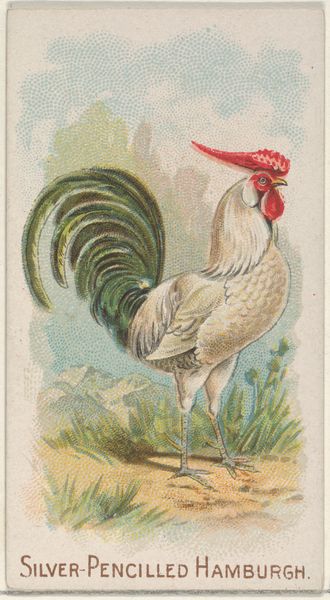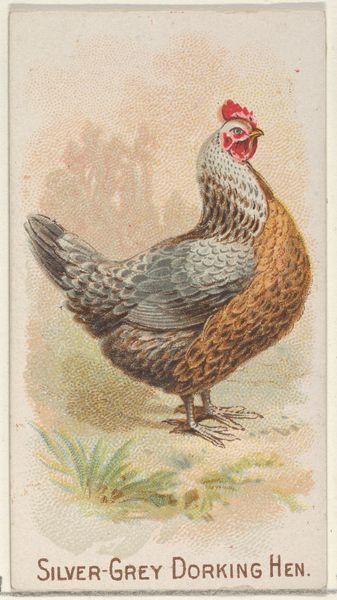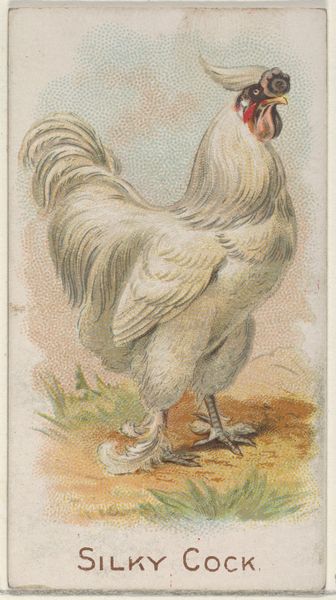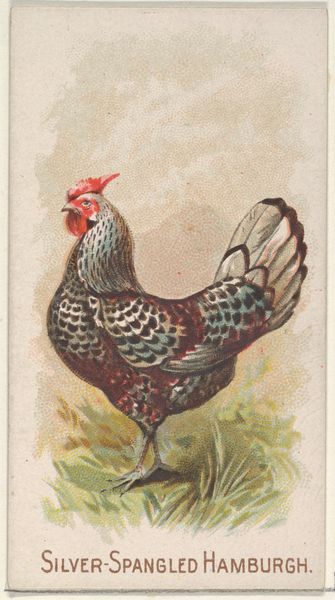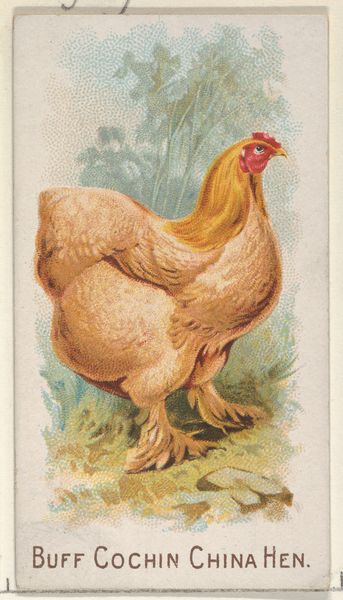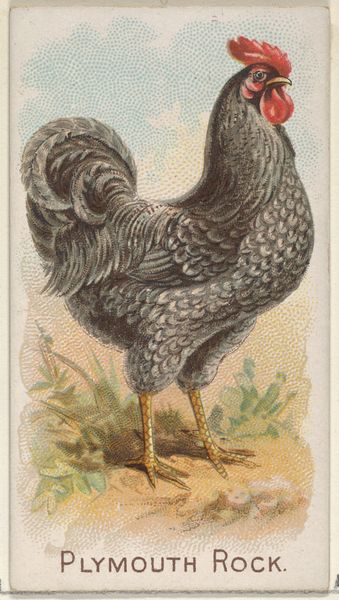
White-Faced Black Spanish Cock, from the Prize and Game Chickens series (N20) for Allen & Ginter Cigarettes 1891
0:00
0:00
drawing, coloured-pencil, print
#
drawing
#
coloured-pencil
# print
#
coloured pencil
Dimensions: Sheet: 2 3/4 x 1 1/2 in. (7 x 3.8 cm)
Copyright: Public Domain
Editor: So, here we have a coloured-pencil drawing, reproduced as a print, titled "White-Faced Black Spanish Cock," created in 1891 by Allen & Ginter. It's part of a series for cigarette cards, and it’s strikingly detailed, almost scientific in its precision. I’m curious about how a seemingly simple image like this functions beyond its literal representation. What aspects of its cultural context inform its meaning? Curator: That's a keen observation! It’s easy to overlook these cards as just advertising ephemera, but they actually offer a window into late 19th-century social values and the rise of consumer culture. Consider that the detailed depiction of a "prize" chicken reflects an emerging interest in specialized breeding and agricultural competitions. Why would a cigarette company want to associate with images of prize-winning animals? Editor: I guess it's about associating the brand with quality and luxury? This detailed image, seemingly celebrating this specific breed, subtly elevates the product in the consumer’s mind. Curator: Exactly. These cards served an educational function, disseminating knowledge about various subjects while simultaneously reinforcing social hierarchies and aspirational lifestyles. Consider also how these images were distributed - easily collected and traded. They built a community around consumption and created a visual language tied to the acquisition of goods. How does the standardization of the image, through its reproduction as a print, speak to this cultural phenomenon? Editor: I see what you mean. The standardization implies a broader reach, influencing tastes and ideas on a wider scale. Plus, because it's for cigarettes, it creates a very wide distribution via everyday use, beyond a museum or gallery. It's art intertwined with everyday life and desire. Curator: Precisely. And understanding this artwork requires analyzing not only its aesthetic qualities but also its place within the networks of commerce, knowledge, and power that shaped its creation and reception. Editor: That makes me consider consumerism in art in a completely different way. Curator: Yes, and remember how intertwined popular culture, advertising and art have always been!
Comments
No comments
Be the first to comment and join the conversation on the ultimate creative platform.
